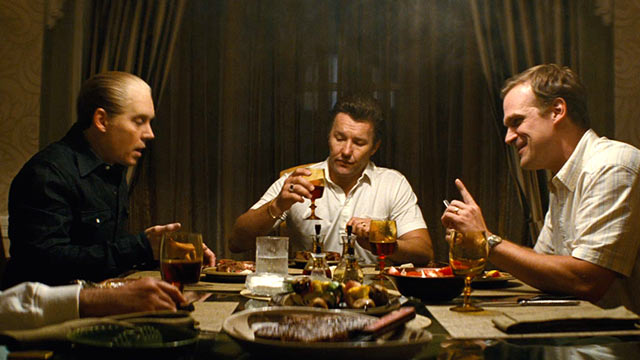Guillermo
del Toro’s “Crimson Peak” was released in October to attract an audience
looking for some chills on their way out of the mall, and given that there are
fewer and fewer scary-movie options, outside of the realms of
direct-to-second-run shlock and/or “Paranormal Activity” clones, it’s nice to a
see a large-budget, effects-driven period-horror that’s trying to compete in
the mainstream. In fact, del Toro treats this project just as he would any of
his other features, combining the gloss and bombast of his 2013 giant-robot
spectacle “Pacific Rim” and the gothic elegance of his Spanish-language
fantasy-thrillers” and “The Devil’s Backbone” and “Pan’s Labyrinth.”
Visually
and conceptually “Crimson Peak” is a dense genre-hybrid that marries the
traditional narrative structure of nineteenth century, Victorian romantic
literature with a blockbuster update of a Hammer-Studio styled haunted house
ride—it bares mentioning del Toro was once attached to direct a “Haunted
Mansion” reboot for Disney. What results is an uneven and some-what rigid film
that, while ambitious and handsome in terms of its production, is rather empty
and tepid as a story.
Mia
Wasikowska plays Edith, the daughter of a wealthy American industrialist.
Though she wishes to one day be a successful writer, after meeting a fledgling
British inventor named Thomas Sharpe played by Tom Hiddleston, and his
disapproving sister played by Jessica Chastain, Edith decides, against her
father’s wishes, to marry the struggling aristocrat and follow him to his
decaying mansion in England. the newly-wed Edith begins to feel less and less
welcomed by the creaking house as the months goes by, and her marriage begins
to strain under the constant supervision of her overbearing sister in law.
To the
movie’s detriment, the most interesting character here is the mansion itself. As
the plot slogs from scene to scene it’s clear to see that this living, breathing
set seems to be the only thing in the film that del Toro bothered to give any real
dimension. The production of this multi-segmented mansion is fully realized and
designed with many swirling arches, ornate moldings, and antique trinkets filling
every consciously arranged shot. This decorative flair is then brought to life
though many practical and CGI effects, including walls that bleed crimson clay
and moving shadows that cast down long hallways. And yet, the production is so
costumed and ornamental that it often overwhelms the performances and constipates
the drama.
Many
of the special effects are unsupported by the weak and conventional script and
thus left with a surprising lack of tension within the traditionally set-up
sequences of horror. CGI ghosts are rarely scary and even less so when, by the
end of the film, you realize their inclusion in the plot is mostly superfluous.
This might also have to do with the overall tonal problems the film suffers by
wanting to appeal to the masses as too many things at once, a Victorian costume
drama, a gothic fairy-tale, and a perverse murder mystery—all of which are
wrapped up in a slick, over-lit production that’s far more concerned with its
surfaces than it is with its emotional or psychological connection with the
audience.
Struggling
to find a balance between chaste and polite and guarded and mysterious, Wasikowska
and Hiddleston’s performances come off somewhat bland and stagey. The same or
worse could be said about “Sons of Anarchy” actor Charlie Hunnam who conveniently
drifts in and out of the movie as a plot device. Chastain, on the hand, revels in her
character’s complete lack of subtext and subtlety and instead leans into a
knowing sense of camp as the film escalates into face-stabbing hysteria, mixing
into her performance two parts Mrs. Danvers from Hitchcock’s “Rebecca” and one
part “Mommy Dearest.”
Despite
mostly failing as an involving story or as an effective thriller, nobody can
fault the film for its lack of trying. Del Toro deserves to be commended for
his creativity and his willingness to take risks, even when working from a
script as predictable and tired as this one. His love for the genre is
undeniably contagious and like a familiar theme-park adventure, there’s always
something interesting to look at and admire as you pass through the plodding
set-pieces.
Grade:
C
Originally published in the Idaho State Journal/Oct-2015


